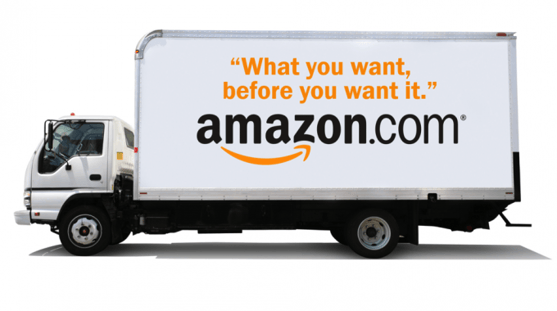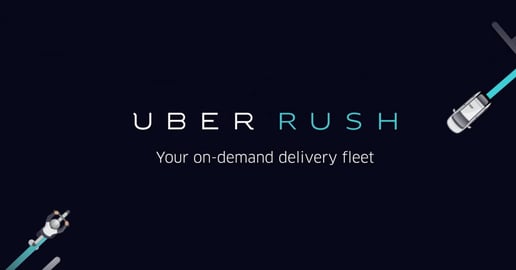REDWOOD LOGIN
Redwood PortalLTL
SCS
SCS Support
Rockfarm
The logistics industry is a booming, multi-trillion-dollar industry that is projected to grow at a rapid rate over the next decade. As online retailers are making two-day and next-day shipping options the new standard, consumers are demanding their products reach them quicker than ever, which is forcing the logistics industry to come up with innovative solutions in order to keep up with the new normal.
While third-party logistics (3PL) firms and trucking companies are trying to keep up with the increased demand, two tech giants are disrupting the way logistics is being handled – Amazon and Uber. Amazon is one of the main culprits in speeding up the shipping process thanks to Amazon Prime, but the first thing that pops into your head about Amazon is their online marketplace, not logistics. Uber, on the other hand, is a form of personal logistics since they move people from one point to another, but many couldn’t see Uber making an impact in commercial logistics.
In this article, we’ll take a look at how Amazon and Uber are both making their own mark on the logistics industry.
 Amazon is an online retail giant that has taken a giant leap forward with the boom of the e-commerce market. Consumers are no longer going to brick-and-mortar stores in favor of the convenience of shopping at home. Amazon is taking advantage of the market and is now trying to master the next level of the e-commerce boom, which is the supply chain.
Amazon is an online retail giant that has taken a giant leap forward with the boom of the e-commerce market. Consumers are no longer going to brick-and-mortar stores in favor of the convenience of shopping at home. Amazon is taking advantage of the market and is now trying to master the next level of the e-commerce boom, which is the supply chain.
In their pursuit of supply chain dominance, Amazon has introduced Amazon Flex, Seller Flex and Amazon Prime Air programs, which are all shipping options that will allow Amazon to handle all of their shipping services in-house. This move will likely lead to Amazon cutting ties with their current contracted logistics providers, resulting in huge cost savings. On top of those savings, Amazon is in the process of rolling out Shipping with Amazon, which will offer logistics services to third-party companies who are not affiliated with Amazon. So instead of paying for outside shipping help, Amazon will be handling their own shipping while also providing shipping services similar to FedEx and UPS.
Amazon’s reach to pretty much every corner of the country will help their transition to handle their own delivery services. 50 percent of people in the United States live within 20 miles of an Amazon warehouse, which helps reduce costs on last-mile delivery services. The last-mile delivery, which is the movement of products from a warehouse to the final destination, makes up 30 percent of all logistics costs. Amazon’s reach limits expenses on last-mile deliveries, making their shipping services more inclusive and less costly to consumers.
 Uber’s instantaneous passenger pick up has revolutionized the way people get from one place to another. The next step in Uber’s development is to try to apply the same principles they use for passenger transportation to product movement. With UberRush and UberFreight, Uber is becoming a cheaper last mile delivery service (UberRush) or a middle man cheaper than a 3PL (UberFreight).
Uber’s instantaneous passenger pick up has revolutionized the way people get from one place to another. The next step in Uber’s development is to try to apply the same principles they use for passenger transportation to product movement. With UberRush and UberFreight, Uber is becoming a cheaper last mile delivery service (UberRush) or a middle man cheaper than a 3PL (UberFreight).
Instead of price shopping with multiple 3PLs, then waiting for those companies to secure a truck, UberFreight is allowing companies to streamline this process by offering instantaneous availability at a given price. This is allowing companies more flexibility and saving on the cost of a 3PL, who has to add their brokerage margin into the shipping charges. UberRush has freelance drivers working as parcel delivery drivers, which increases availability and improves delivery time. These two services are not nationwide yet but will likely be available to more than a few select markets in the near future.
As they are currently experimenting with driverless cars for passenger transport, Uber is trying to take their logistics platform to the next level through self-driving technology. In 2016, Uber purchased a driverless technology company called Otto that can outfit semi-trucks with a self-driving kit. Instead of manufacturing driverless trucks, Uber and Otto can now sell a package that a carrier can install on their truck that will eliminate the need for a driver.
Amazon and Uber are not companies you would think of when it comes to transportation innovation, but both are striving for the future of logistics – autonomous shipping. Uber made the first completely autonomous delivery in 2016, while Amazon has a patent for a roadway management system for self-driving vehicles. When shipping is completely autonomous, there is no need for a driver which means there is no need to pay for a driver. Autonomous shipping would cut shipping costs across the country while giving customers more visibility on each shipment. While package tracking has improved recently, it is likely Amazon and Uber would be able to provide live tracking of autonomous shipments to their customers.
Both companies are striving to take over the trillion-dollar shipping industry through a variety of innovative technologies and services. Over the next few years, as both companies develop their logistics efforts and technology, the winners of this logistics race will be the customers because it will cut shipping costs and allow much more clarity than today’s shipping methods.